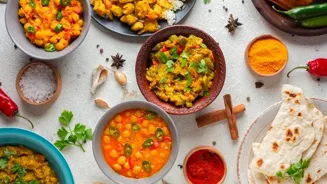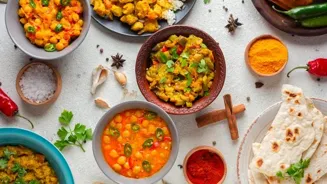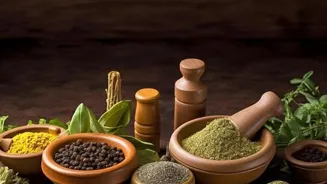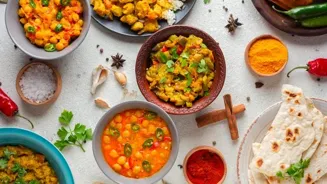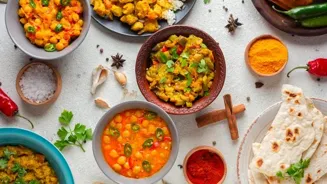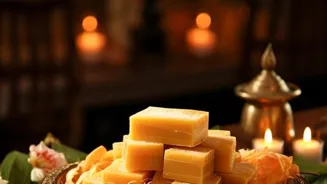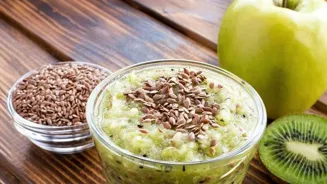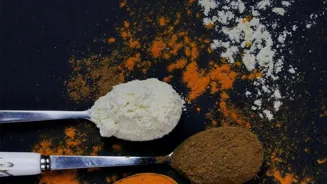Delve into the world of Indian dal - a culinary journey of flavors and traditions. Discover the art of cooking with lentils!
Dal, the humble lentil stew, is a staple in Indian kitchens. More than just a source
of protein, it's an art form, a culinary canvas where simple ingredients transform into comforting and flavorful dishes.
From the creamy Maa ki Dal of Punjab to the tangy Amti of Maharashtra, the variety of dals across India is astounding, each region boasting its unique recipes and cooking styles.
Learning to cook dal well is almost like learning a new language; it opens up a world of flavors and possibilities in your kitchen. It's time we explore the world of Indian dal.
Indian dal recipes: versatile, simple, personal
Every Indian household has its own special dal recipe passed down through generations. The magic of dal lies in its simplicity and adaptability. Using just a few basic ingredients like lentils, spices, and ghee, one can create an array of dishes.
But mastering the art of dal making requires understanding the properties of different lentils, the correct water ratio, tempering, and the right balance of spices.
A perfectly cooked dal should be smooth and creamy, with the lentils melting in your mouth, while the flavors are well-balanced, not overpowering. The beauty of dal is that there is no “one right way” to cook it.
Experimentation and personalization are key, with each cook adding their own touch to create a dish that is uniquely their own.
Wide variety of lentils in India with unique flavors, textures, and cooking times
India boasts a wide variety of lentils, each with its unique flavor, texture, and cooking time. Toor dal (split pigeon peas) is a popular choice for sambar and is known for its slightly sweet and nutty flavor.
Moong dal (split yellow lentils) is light, easily digestible and perfect for simple dals or khichdi. Urad dal (split black lentils) is used in dishes like Dal Makhani and is known for its creamy texture. Masoor dal (red lentils) cooks quickly and is often used in simple everyday dals.
Chana dal (split chickpeas) takes longer to cook but has a unique, nutty flavor. Knowing the characteristics of each lentil helps in choosing the right one for a particular dish and ensuring optimal cooking results. So before buying these dals , make sure you know what you are going to cook.
Tempering spices enhances Indian dals, a culinary art
Tempering, also known as tadka or chonk, is the heart and soul of many Indian dals. It involves heating oil or ghee in a small pan and adding spices like cumin seeds, mustard seeds, asafoetida (hing), dried red chilies, and curry leaves.
Once the spices start to splutter and release their aroma, the tempering is poured over the cooked dal, infusing it with a burst of flavor. A well-executed tadka can elevate a simple dal to a culinary masterpiece.
The order in which the spices are added and the temperature of the oil are crucial for achieving the perfect tempering. To achieve the perfect tadka you need to start doing by seeing videos or from an expert. Without proper knowledge it can be a tough thing to do.
If you can do this properly then you can feel like it is a life changing experience.
Indian dals flavored by unique spices, vary by region, experiment for flavor
Spices are what give Indian dals their distinctive flavors. Turmeric powder (haldi) is a staple, known for its vibrant color and anti-inflammatory properties. Cumin powder (jeera) adds a warm, earthy flavor. Coriander powder (dhania) provides a subtle sweetness.
Red chili powder (lal mirch) adds heat, and garam masala, a blend of various spices, adds complexity and warmth. The use of spices depends on the type of dal and regional preferences. Experimenting with different spice combinations can result in unique and flavorful creations.
If you are a beginner then you should take help by watching the videos or you can see recipes to know the accurate amount of spices in any dal.
Soak lentils before cooking for perfect dal; adjust seasonings
For a perfectly cooked dal, soak the lentils for at least 30 minutes before cooking. This helps in reducing cooking time and makes the lentils more digestible. Use the right water ratio to avoid a watery or overly thick dal.
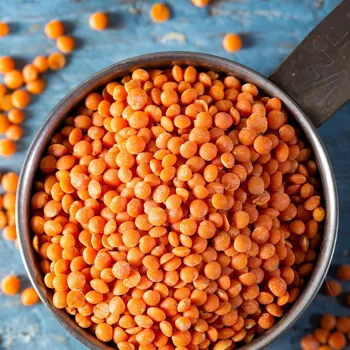
Pressure cooking or simmering the dal over low heat allows the flavors to meld together. Adding a touch of lemon juice or amchur powder (dried mango powder) at the end brightens the flavors. Ghee adds richness and enhances the taste of the dal.
And remember, tasting and adjusting the seasoning as you go is key to achieving the perfect balance of flavors. Always remember to soak the dal before cooking so that, it can boil properly.
Dal: a versatile and comforting staple in Indian cuisine
Dal is more than just food; it's a symbol of comfort, nourishment, and home. Its versatility and nutritional value make it an important part of the Indian diet. Whether you're a seasoned cook or a beginner, mastering the art of dal making is a rewarding culinary journey.
Start experimenting with different lentils, spices, and techniques, and you'll soon discover the endless possibilities of this humble yet delicious dish. After experimenting you can be expert in dhal making.
AI Generated Content. Glance/InMobi shall have no liability for the content